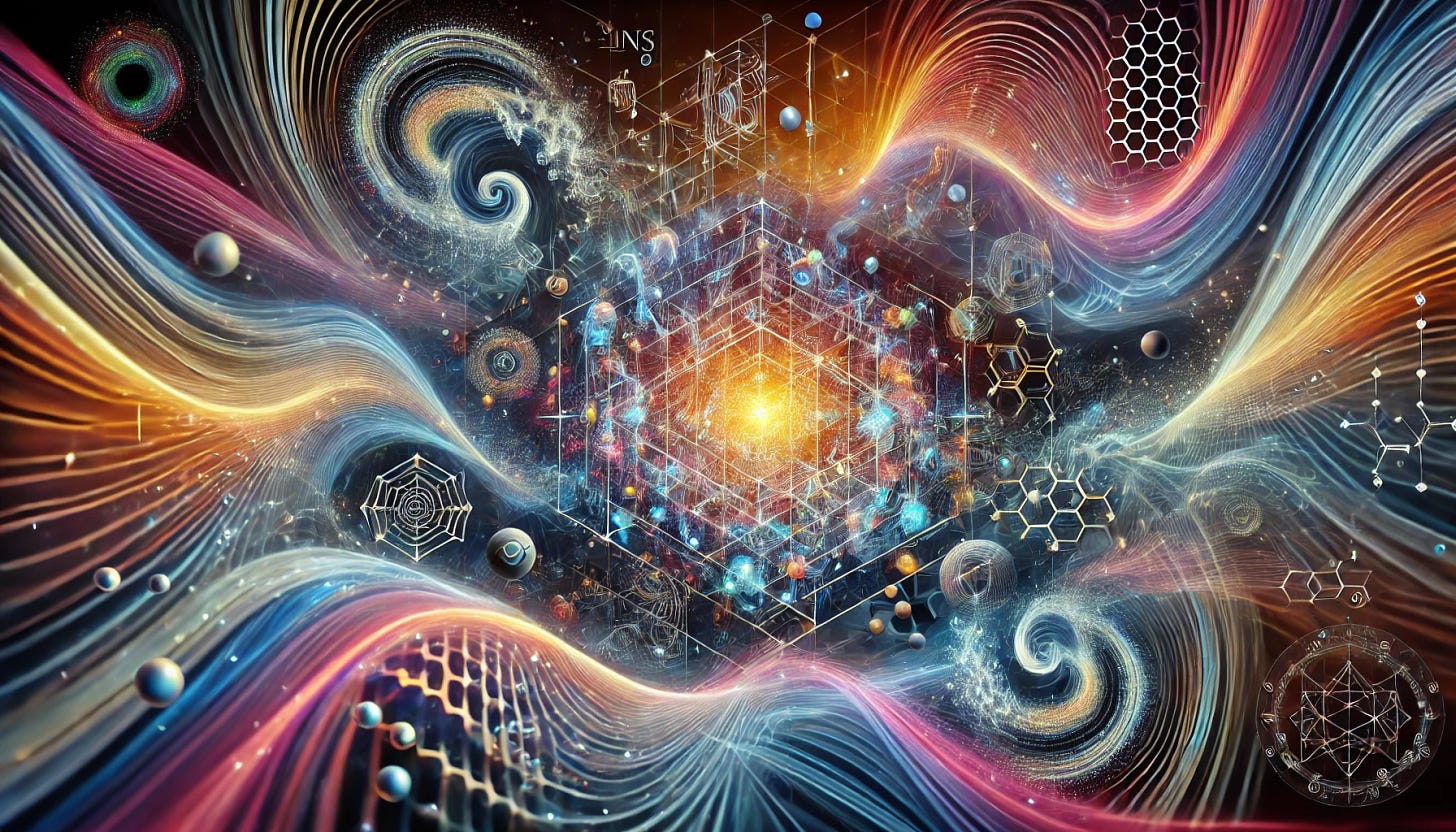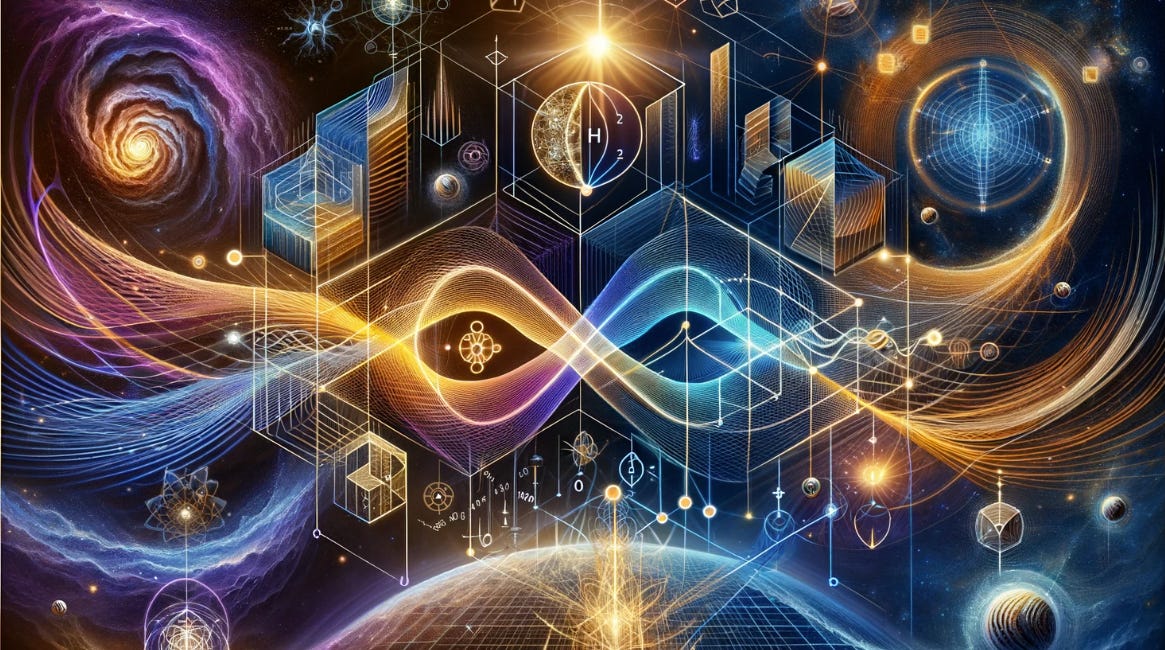Introduction
In the context of a holographic universe, where the nature of reality is perceived as a projection from lower dimensions, waves and particles play fundamental roles. By examining these concepts through the frameworks of the Mathis Number System (MNS) and the Unified Theory of Duality (UTD), we can gain deeper insights into how they contribute to the creation of the third dimension. This essay explores the idea of waves and particles as lower-dimensional entities that construct our three-dimensional reality.
Waves and Particles as Lower Dimensions
Wave-Particle Duality:
Quantum Mechanics: In quantum mechanics, wave-particle duality describes how particles such as electrons exhibit both wave-like and particle-like properties. This duality is a cornerstone of quantum theory, highlighting the complex nature of subatomic entities.
Lower-Dimensional Constructs:
1D and 2D Entities: In a holographic universe, one can hypothesize that waves and particles exist as lower-dimensional entities—waves as one-dimensional (1D) entities representing vibrations and frequencies, and particles as two-dimensional (2D) entities representing discrete points with mass and charge.
Constructing the Third Dimension
Holographic Principle:
Projection from Lower Dimensions: The holographic principle suggests that the information contained in a lower-dimensional space can be projected to form a higher-dimensional space. In this context, waves (1D) and particles (2D) interact to create the fabric of our three-dimensional (3D) reality.
Interference Patterns: Holograms are created through the interference of light waves. Similarly, the interference of 1D waves and 2D particles could generate the complex patterns that constitute the 3D universe.
Integration with MNS and UTD
Mathis Number System (MNS)
Harmonic Quantization:
Discrete Harmonic Units: In MNS, energy interactions are quantized into discrete harmonic units. Waves, as 1D entities, represent fundamental frequencies, while particles, as 2D entities, embody harmonic nodes where these frequencies intersect.
Geometric Representation:
Fractals and Patterns: MNS uses geometric and fractal patterns to model interactions. Waves and particles can be seen as the building blocks of these patterns, with their interactions forming the intricate structures of the 3D world.
Unified Theory of Duality (UTD)
Duality and Interaction:
Wave-Particle Duality: UTD posits that all phenomena exhibit dual properties. Waves and particles represent the fundamental duality, their interaction generating the complex behaviors observed in the 3D universe.
Harmonic Resonance: The resonance between waves and particles creates harmonic patterns that form the basis of physical reality.
Predictive Plenum:
Dynamic Medium: UTD's Predictive Plenum is an interconnected medium filled with fluctuating energy fields and resonant frequencies. Waves and particles exist within this plenum, their interactions shaping the observable universe.
Correlations and Experiments
Mathematical Modeling:
Wave Equations: Use Schrödinger's equation to model the wave properties of particles and their interactions in a lower-dimensional space:
\(iℏ ∂t ∂Ψ =− 2m ℏ 2 ∇ 2 Ψ+VΨ\)where Ψ is the wave function.
Field Equations: Develop field equations that incorporate both wave and particle properties to describe the dynamic interactions in the Predictive Plenum.
Experimental Validation:
Double-Slit Experiment: Conduct variations of the double-slit experiment to observe how wave and particle behaviors manifest in lower-dimensional setups, providing insights into their roles in creating 3D patterns.
Cymatics: Use cymatic experiments to visualize how 1D waves interacting with 2D particles can generate complex 3D patterns in a medium.
Conclusion
By viewing waves and particles as lower-dimensional entities in a holographic universe, we can better understand their fundamental roles in constructing our three-dimensional reality. Integrating the principles of the Mathis Number System and the Unified Theory of Duality offers a comprehensive framework for exploring these interactions. Through mathematical modeling and experimental validation, we can delve deeper into the nature of reality, uncovering the intricate patterns that form the basis of our existence.
References
Quantum Mechanics and Wave-Particle Duality: Quantum Mechanics: The Theoretical Minimum
Holographic Principle: The Holographic Universe
Cymatics and Sound Visualization: Cymatics: A Study of Wave Phenomena
Proving the Existence of Aether
Proving the Existence of Aether in UTD Using the Mathis Number System The concept of the Aether, an invisible medium thought to fill space and transmit electromagnetic waves, was largely dismissed after the Michelson-Morley experiment and the rise of Einstein’s theory of relativity. However, with the



